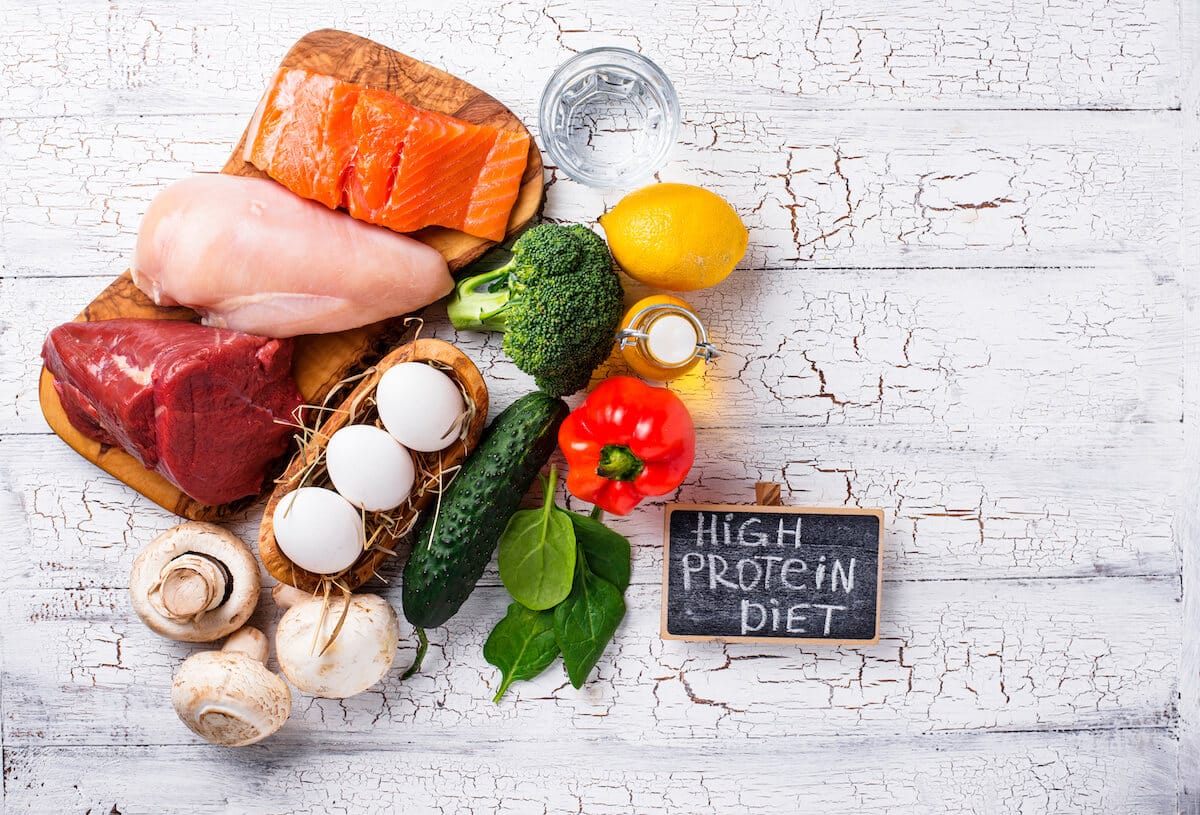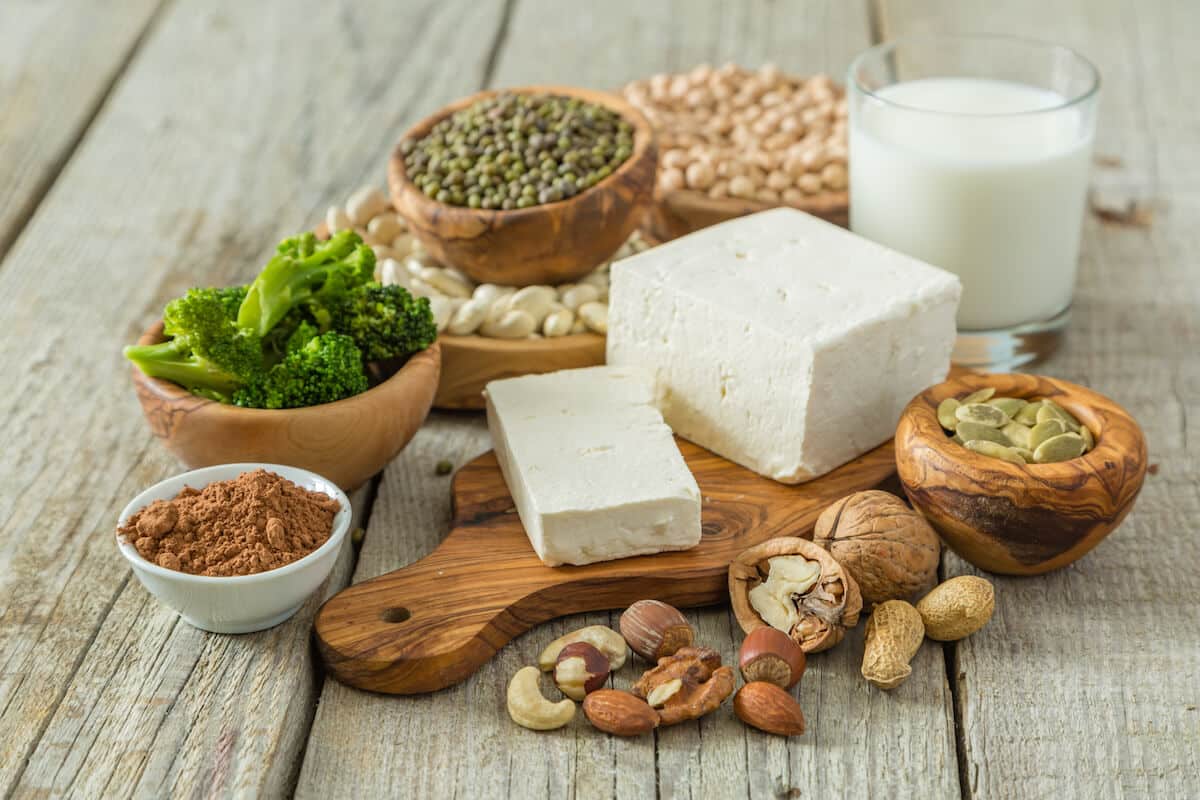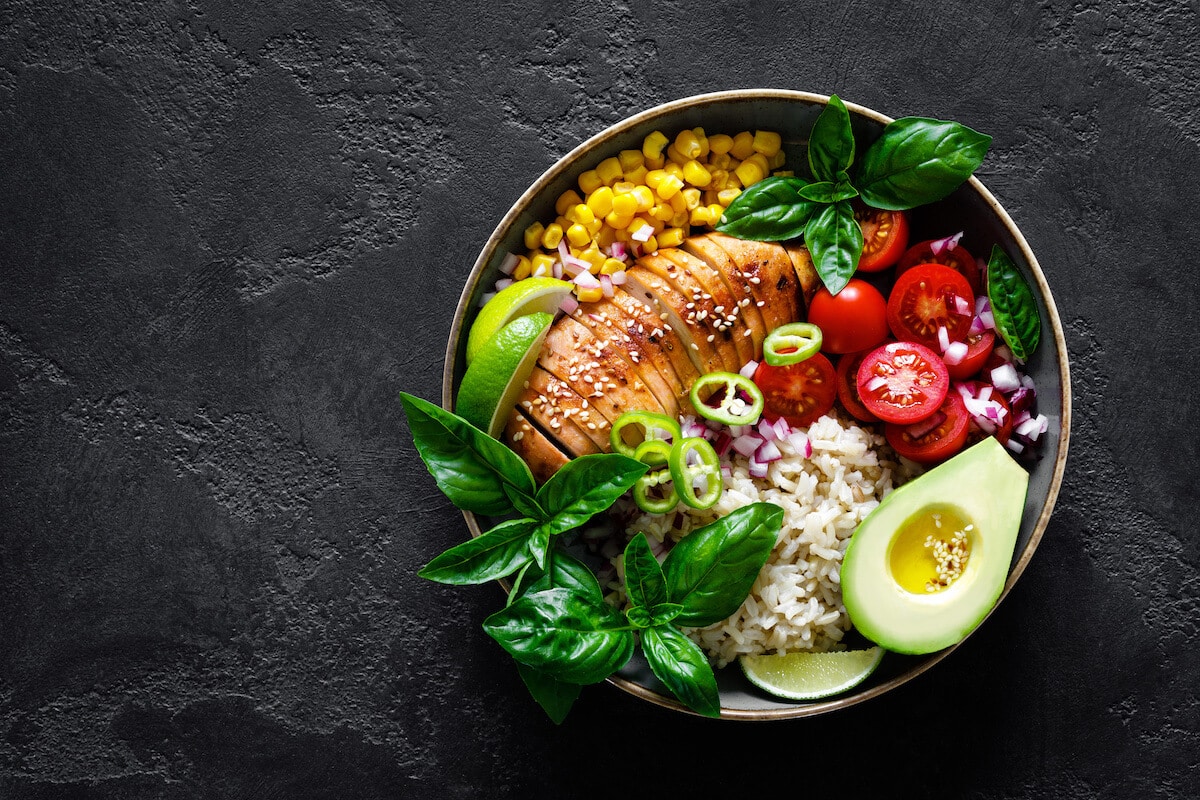
08 Jul How to Increase Protein Intake: A Quick Guide
Are you wondering how to increase protein intake to support your fitness and health goals? Every cell in your body requires protein to function correctly, and it’s an essential nutrient for building muscle mass and strength. Plus, higher protein intake can help you feel full for longer, supporting weight loss and caloric regulation.
This guide covers how to increase protein intake as a regular part of your diet. You’ll also learn about the benefits of adding extra protein to your daily intake and identify the best sources of protein to achieve your objectives.
Why You Need Protein
The three essential macronutrients include protein, carbohydrates (carbs), and fatty acids — you need each in your diet for optimal health. Since every cell in your body requires protein, people of all ages and fitness levels must ensure they’re eating enough. The more physical activity you get, the more grams of protein you need each day.
Below are standard protein requirements:
- Average activity levels: Those with moderate activity levels require around 0.8 grams of protein daily for each kilogram of body weight.
- Athletic activity levels: Those with athletic activity levels may require between 1.2 and 2 grams of protein (or more) per kilogram of body weight per day.
Signs of protein deficiency include losing muscle, feeling weak, fluid retention, weakened immune system, fatty liver disease, brittle bones, hormone imbalances, and more. And if you eat too much of this valuable nutrient, you risk placing extra stress on your kidneys and liver by asking them to process more of it, as well as potential calcium deficiency.
Aiming to eat close to the recommended amount of protein for your activity level is the best way to make sure you’re not getting too much or too little. Speak with a nutritionist or dietitian to determine precisely how much protein you need each day based on your age, health, and activity levels.
Complete Protein vs. Incomplete Protein
Protein is made up of building blocks known as amino acids, and your body breaks it down into these building blocks to use them. Nine of the amino acids your body requires — known as essential amino acids — must be obtained from food, as your body cannot create them internally as it can other amino acids.
When a food has all nine essential amino acids, it contains “complete protein.” If it doesn’t have sufficient amounts of all nine essential amino acids, the food contains “incomplete protein” instead. Without sources of complete protein, your body won’t have what it needs to maintain physical health and muscle mass.
Animal proteins like meat, fish, dairy, and eggs contain complete proteins, as do some plant proteins like soybeans, peas, and quinoa. Some combinations of two incomplete protein sources can also provide all the amino acids needed for complete protein. For example, beans and brown rice are a typical combo to get a quick boost of complete protein. Try to boost your protein intake with complete proteins instead of incomplete proteins whenever possible.
Benefits of High-Protein Diets
Eating a high-protein diet does more than support athletic activity levels — protein also offers the following health benefits:
- Reduced hunger, appetite, and cravings
- Increased muscle mass and strength
- Better bone health
- Boosted metabolism
- Lowered blood pressure
- Maintained weight and weight loss
How to Increase Protein Intake

Before increasing your protein intake, determine how many grams of protein you need daily. Then, track your macronutrient intake (this is easy with programs and apps like MyFitnessPal) to monitor how much protein you eat each day.
Track your food intake for five to seven days to get a good idea of how much protein you eat. You can use this average to determine how much protein you need to add to your daily diet. Aim to spread your daily protein intake evenly between your meals and snacks — your body can only absorb so much protein, so eating it all in one sitting won’t be effective.
From there, you can work on adding high-protein foods to your meals to make it easier to hit your goals. And don’t forget to focus on high-quality sources of protein, as these feature better protein bioavailability, which means it’s easier for your body to absorb.
Animal Protein Sources
Animal protein sources always contain complete proteins, and they’re the simplest way to increase your protein intake. Here are examples of common animal protein sources to add to your diet:
- Dairy: cottage cheese, Greek yogurt, milk, and cheese
- Meats: chicken, beef, and pork
- Seafood: fish and shellfish
- Other animal proteins: eggs
Adding an animal protein source to any meal is a sure way to boost the protein content. For example, a basic stir-fry, soup, or bowl of whole grains might not have much complete protein, but you can remedy this by adding a chicken breast or some hard-boiled eggs on top.
Plant Protein Sources

If you’re vegetarian, vegan, or just like plant-based foods, you’ll need to be extra careful about getting complete proteins. Most plant foods are great for healthy eating, but they don’t always contain complete protein or enough protein to help you reach your goals.
Be intentional with your diet and add plant protein sources to every meal. Here are some examples of complete plant proteins:
- Chia seeds
- Soy products (e.g., edamame, tofu, tempeh, soy milk, soy nuts, and soy sprouts)
- Green peas
- Quinoa
- Buckwheat
- Hemp seed
- Amaranth
- Nutritional yeast
- Spirulina
- Mycoprotein and some other plant-based meat substitutes
And here are some examples of incomplete plant proteins:
- Nuts and seeds (e.g., almonds, walnuts, cashews, sunflower seeds, etc.)
- Beans and legumes
- Most grains (e.g., rice, oats, barley, millet, etc.)
- Fruits
- Vegetables
You can also combine some whole foods to make complete proteins — these combinations most commonly include legumes or beans paired with whole grains like brown rice. For example, you can serve chickpeas, lentils, black beans, or hummus over brown rice to create a complete protein. The legumes contain the essential amino acids that brown rice lacks, rounding out the amino acid profile.
Protein Supplements
Protein supplements are available in either animal-derived or plant-derived varieties. If you’re wondering how to increase the protein intake in any given meal, adding a protein supplement is a quick and easy way to do it. For example, you can use protein powders to make smoothies, or you might opt for meal replacements like protein bars for an on-the-go protein boost.
Maintaining a high-protein diet is much easier with the help of supplements. Look for products that use high-quality Ingredient Optimized protein sources. When you use low-quality sources with poor bioavailability, your body might not be able to absorb all of the protein you see on the label. By shopping for Ingredient Optimized sources, you can rest assured that you get all the protein you pay for in every serving.
Consider these protein supplements to increase your protein intake:
- MyProtein’s The ioPEA (plant-based)
- Performix’s ioWHEY Protein
- Kaged Muscle’s Plantein (plant-based)
- Kaged Muscle’s Clean Meal
Sample High-Protein Meal Plan

You now know how to increase protein intake, but what would your average day look like? Here’s a sample high-protein meal plan to give you a good idea:
- High-protein breakfast: Whey protein smoothie with almond milk paired with hard-boiled eggs to make it more filling. You might add a slice of whole-grain toast topped with peanut butter for extra calories and complete protein.
- High-protein snack #1: Handful of nuts and seeds or a scoop of nut butter. If you need protein after a workout or just something simple when you’re on the go, try a protein bar.
- High-protein lunch: Chicken breast or tofu over brown rice and steamed veggies with a drizzle of olive oil. For extra protein in this meal, consider adding a bowl of cottage cheese, Greek yogurt, or a protein bar.
- High-protein snack #2: Jerky or a bowl of edamame. If you need more of a protein boost for this snack, consider a protein shake instead.
- High-protein dinner: Stir-fry prepared with fresh edamame and veggies, served over brown rice with a protein topper like chicken breast, beef, pork, or soy curls. If you want more protein at this meal, make pudding mixed with protein powder for dessert.
This sample meal contains several spots to add protein bars, protein powder, and protein shakes — choose one or two of these for meals that need extra protein to meet your goals.
Enjoy the Benefit of a High-Protein Diet
High-protein diets can support your weight loss and muscle-building goals, helping you get the body and level of athleticism you’ve always wanted. Remember to use a nutrient tracker to keep an eye on how many grams of protein you eat every day and at each meal, and adjust as needed. And if you’re looking for supplements, don’t forget to opt for Ingredient Optimized products for improved bioavailability and proven results.


